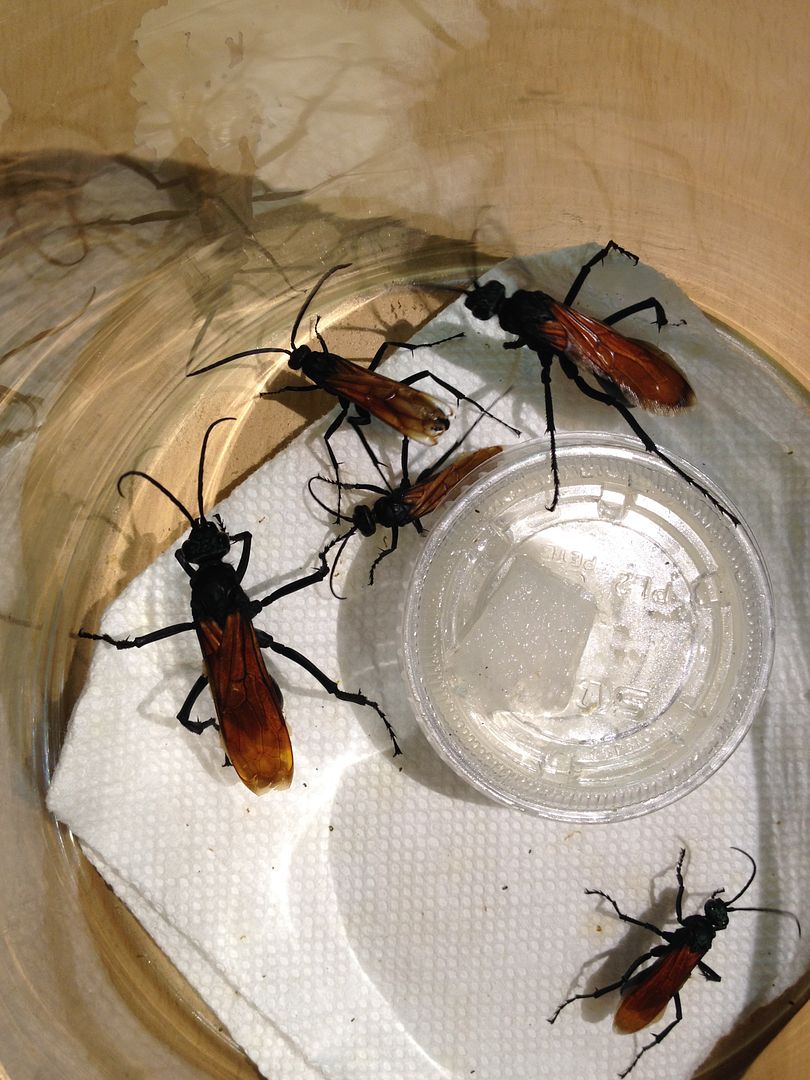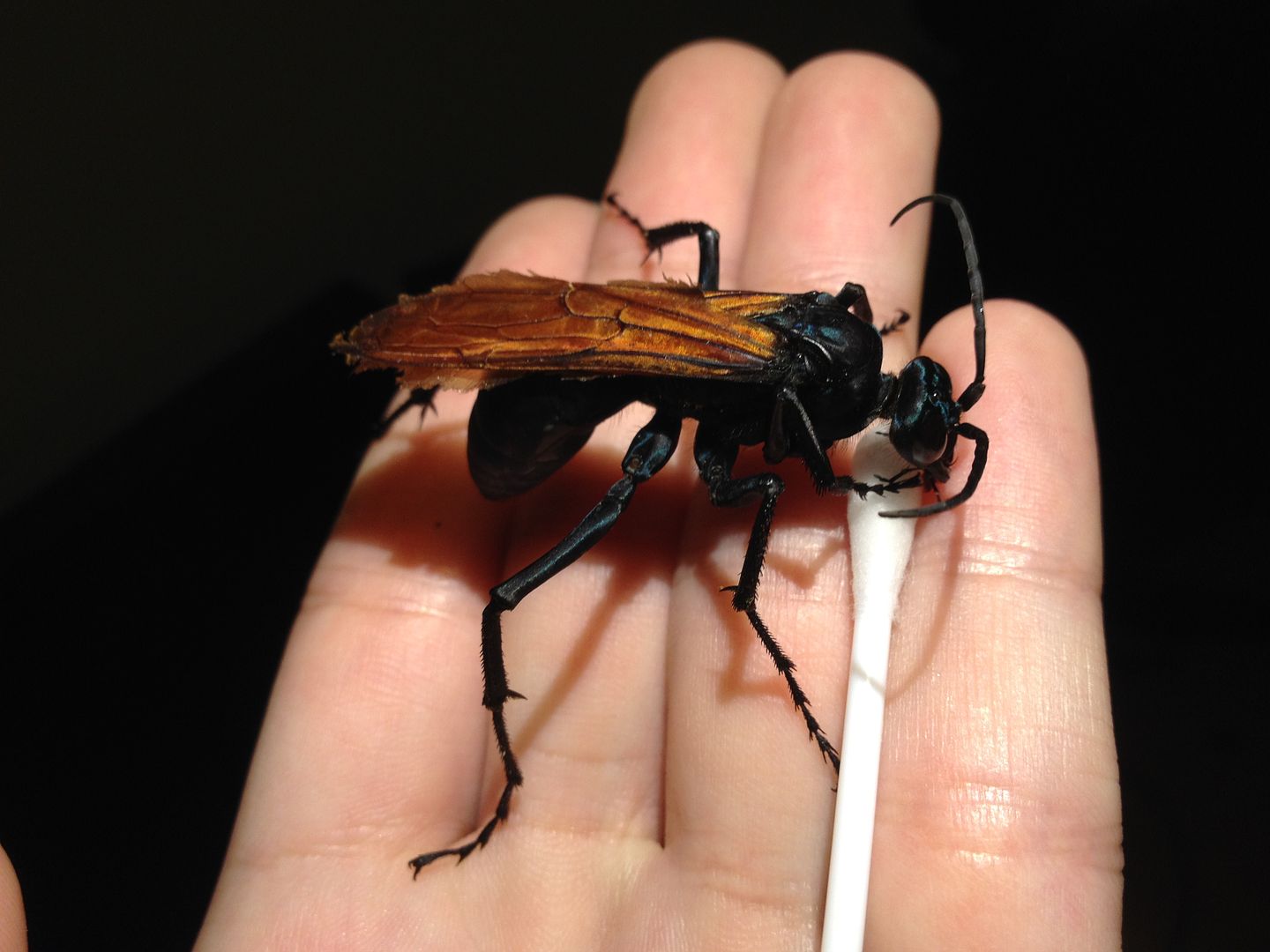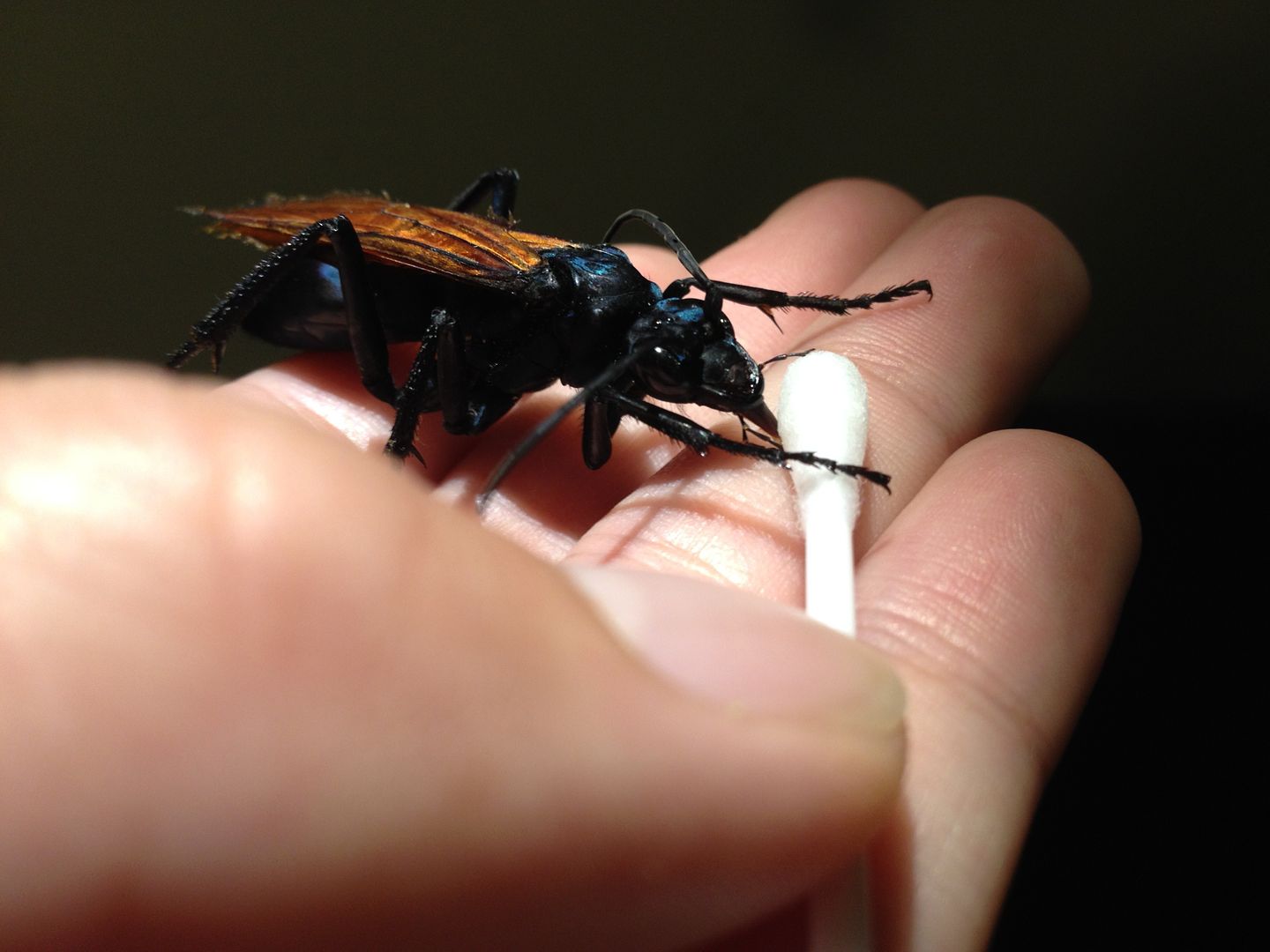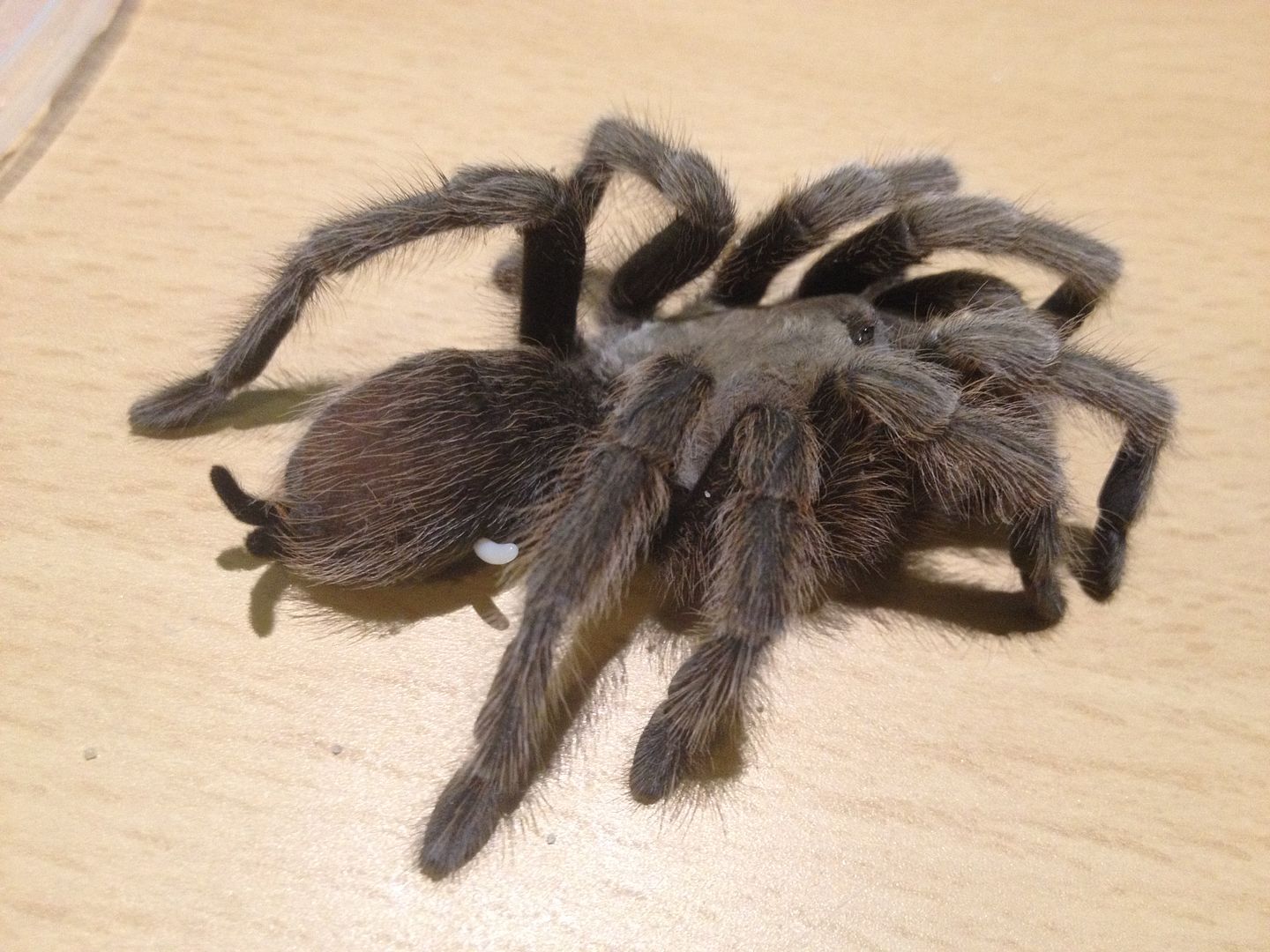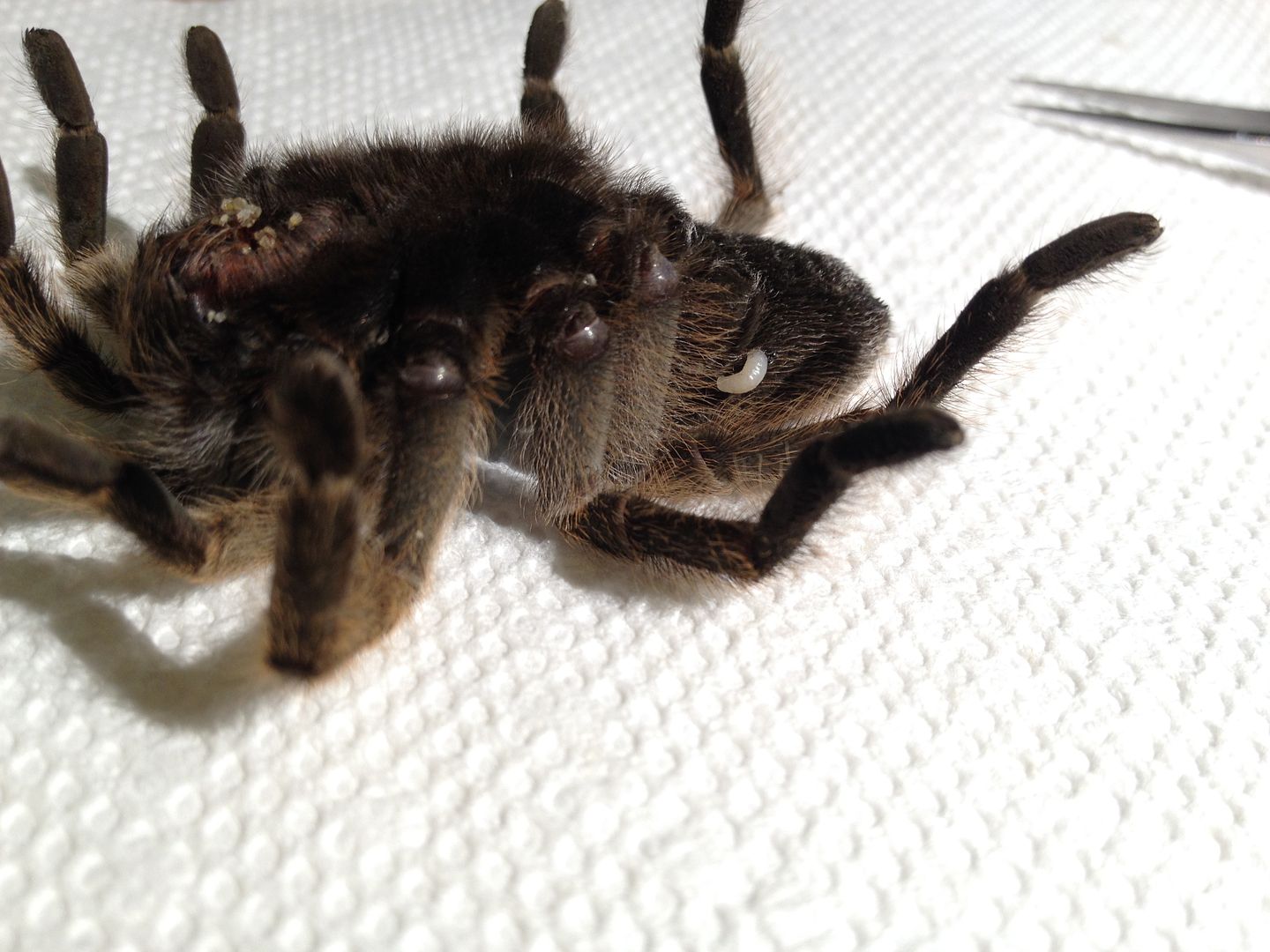- Joined
- Oct 11, 2012
- Messages
- 255
Went out collecting in a canyon and there were dozens of tarantula hawks flying about. I caught a few and here's a male lapping up some sugar solution from a q-tip.
The largest female I captured is about twice his length and more than twice his mass. Each one of these beauties represents a battle fought and won by female tarantula hawk against a tarantula or some other very large spider.

The largest female I captured is about twice his length and more than twice his mass. Each one of these beauties represents a battle fought and won by female tarantula hawk against a tarantula or some other very large spider.


